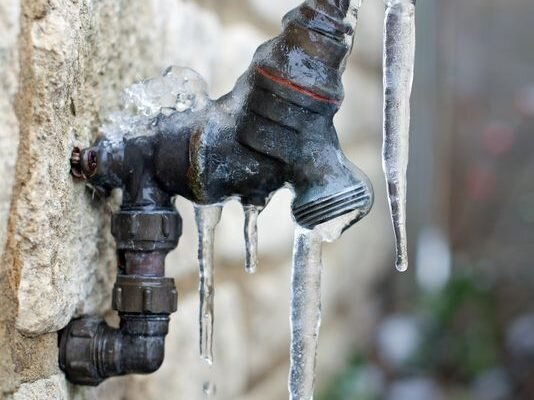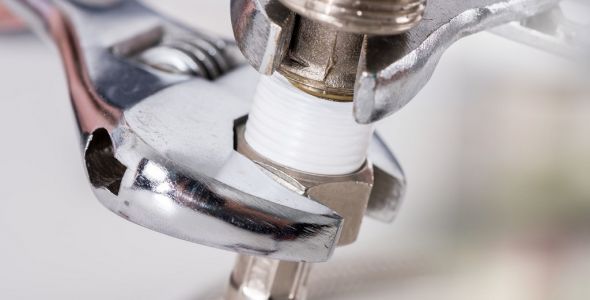Wise Approaches to Secure Your Plumbing in Chilly Temperatures
Wise Approaches to Secure Your Plumbing in Chilly Temperatures
Blog Article
The publisher is making several great points relating to How to Prevent Frozen Pipes overall in this post following next.

All property owners that stay in temperate climates need to do their ideal to winterize their pipelines. It is something you must do during autumn before deep winter season really begins. Failure to do so can mean catastrophe like icy, cracked, or burst pipelines. Here are some convenient winterizing hacks to maintain your plumbing system secured even if the weather exterior is shocking.
Try a Hair Dryer or Warm Weapon
When your pipelines are almost freezing, your trusty hair dryer or warm gun is a godsend. Bowling hot air straight right into them might assist if the hot towels do not help displace any type of settling ice in your pipelines. Do not utilize other things that generate direct fires like a strike lantern. This can lead to a larger catastrophe that you can not control. You might wind up damaging your pipelines while attempting to melt the ice. As well as in the long run, you might also wind up shedding your residence. Be careful!
Open Cabinet Doors Hiding Plumbing
It would be valuable to open up cupboard doors that are masking your pipes when it's chilly outside. For example, they could be someplace in your kitchen area or shower room. This will certainly enable the cozy air from your heater to distribute there. As a result, you avoid these revealed pipelines from freezing. Doing this small technique can maintain your pipelines cozy and limit the potentially harmful results of freezing temperature levels.
Take Some Time to Cover Exposed Pipes
One nifty and also very easy hack to warm up icy pipes is to cover them with warm towels. You can cover them first with towels. After securing them in position, you can pour boiling water on the towels. Do it gradually to allow the towels take in the fluid. You can additionally make use of pre-soaked towels in hot water, simply do not fail to remember to use protective gloves to safeguard your hands from the heat.
Switch on the Faucets
When the temperature drops and also it seems as if the frigid temperature level will last, it will certainly help to turn on your water both inside and also outdoors. This will certainly maintain the water flowing through your plumbing systems. You'll end up losing gallons of water this means.
Shut down Water When Pipelines are Frozen
If you observe that your pipelines are completely icy or almost nearing that phase, transform off the main water shutoff instantly. You will normally find this in your basement or laundry room near the heating system or the front wall closest to the street. Turn it off right away to avoid additional damages.
Do not neglect to close exterior water resources, too, such as your hookup for the yard house. Doing this will certainly avoid added water from filling your plumbing system. With more water, even more ice will certainly pile up, which will at some point lead to burst pipelines. It is best to call an expert plumber for an examination if you are unclear concerning the state of your pipelines this wintertime. Taking this aggressive technique can save you thousands of dollars out of commission.
All property owners that live in temperate environments should do their ideal to winterize their pipes. Failing to do so can spell catastrophe like icy, broken, or ruptured pipes. If the hot towels do not aid dislodge any kind of clearing up ice in your pipes, bowling warm air straight into them may help. Transform off the major water valve instantly if you see that your pipelines are completely icy or practically nearing that phase. With more water, even more ice will stack up, which will eventually lead to break pipes.
PREVENT YOUR PIPES FROM FREEZING THIS WINTER
A Leading Cause of Property Damage
When the weather is taking a deep nose dive into the cold dreary days, the risk of your pipes freezing and potentially bursting skyrockets. Unfortunately, during these cold dreary months, burst pipes are the most common denominator for property damage. The pipes that are most at the risk are those that are in areas where it is most cold in your home. For instance, pipes located in interior places such as basements, attics, and your garage. Unfortunately, that doesn’t mean that the pipes running through your cabinets or exterior walls can’t freeze. Good news, however, is that you can do things to help prevent pipes from freezing.
How to Prevent Pipes From Freezing
Once the temperature starts to drop during the winter, you should be taking the proper measures needed to ensure that your pipes stay warm and that there is circulation of water through them. Some steps that experts may recommend could go against your better judgement when it comes to saving water and heat. However, it would go without saying that when expenses are compared, damaged pipes could put a bigger dent in your wallet than a water bill.
What Can I Do?
Keep your garage door closed. This is very important, especially if you have water supply lines running through your garage. Open your kitchen and bathroom cabinets to allow warm air to circulate through them. Allow air circulation throughout your home. Keeping the interior doors open will once again allow the warm air to circulate inside your home. Ensure your thermostat is running the same temperature throughout the night and day. If you plan to be away from home during the cold months, set your temperature no lower than 55° F. This should provide enough heat to keep the pipes warm and prevent any remaining water inside the pipes from freezing. For more of a long-term solution, add insulation to attics, basement, and other crawl spaces around your home. By allowing your faucet to drip, it will alleviate pressure in the system. This is important because the pressure that is created between the blockage and the faucet can potentially cause the pipes to burst. Allowing the faucet to drip will prevent the pressure from building up, therefore keeping the pipes from bursting. Seal any cracks, openings, and crawl spaces around your home to prevent cold air from coming inside. This keeps your pipes-not to mention your home-warmer and less susceptible to issues caused by freezing temperatures. For the pipes in your home that are easily accessible, applying electrical tape to them might prevent them from freezing over. This is a quick fix, as you can apply the tape directly to the pipe. There are two options for heating tapes. One turns on and off by itself when it senses heat is needed. The other type of heating tape needs to be applied when heat is needed and removed when not necessary. If you have exposed pipes in your home, you can check this website to take a look at a few options that would be available at a shop near you.

As a passionate reader on Prevent Freezing and Bursting Pipes, I figured sharing that piece of content was sensible. Sharing is good. Helping people is fun. I treasure reading our article about How to Prevent Frozen Pipes.
Call us now! Report this page